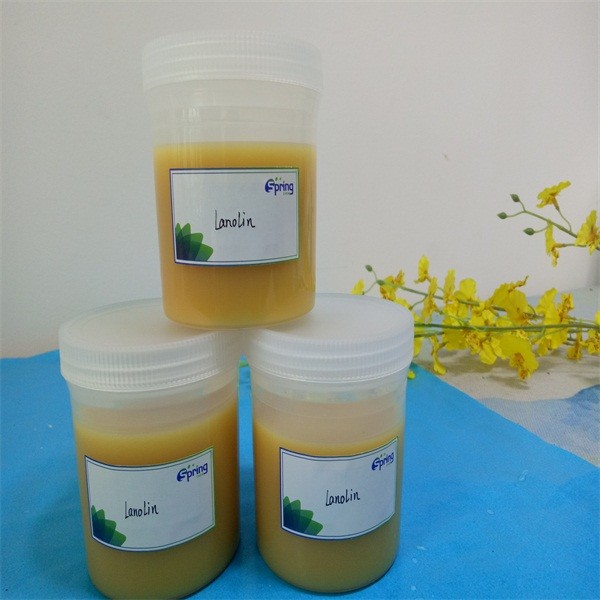Lanolin is a by-product recovered from the washing of coarse wool, which is extracted and processed to produce refined lanolin, also known as sheep wax. It does not contain any triglycerides and is a secretion from the sebaceous glands of sheep's skin.
Lanolin is similar in composition to human sebum and has been widely used in cosmetic and topical drug products. Lanolin is refined and various lanolin derivatives are produced through various processes such as fractionation, saponification, acetylation and ethoxylation. The following is a brief introduction to the properties and applications of lanolin.
Anhydrous lanolin
Source: A pure waxy substance obtained by washing, decolorizing and deodorizing sheep's wool. The water content of lanolin is not more than 0.25% (mass fraction), and the amount of antioxidant is up to 0.02% (mass fraction); EU Pharmacopoeia 2002 specifies that butylhydroxytoluene (BHT) below 200mg/kg can be added as antioxidant.
Properties: Anhydrous lanolin is a light yellow, oily, waxy substance with a slight odor. Melted lanolin is a transparent or almost transparent yellow liquid. It is easily soluble in benzene, chloroform, ether, etc. It is insoluble in water. If mixed with water, it can gradually absorb water equal to 2 times of its own weight without separation.
Applications: Lanolin is widely used in topical pharmaceutical preparations and cosmetics. Lanolin can be used as a hydrophobic carrier for the preparation of water-in-oil creams and ointments. When mixed with suitable vegetable oils or petroleum jelly, it produces an emollient effect and penetrates the skin, thus facilitating drug absorption. Lanolin mixed with about twice the amount of water does not separate, and the resulting emulsion is less likely to rancidify in storage.
The emulsifying effect of lanolin is mainly due to the strong emulsifying power of the α- and β-diols it contains, as well as the emulsifying effect of cholesterol esters and higher alcohols. Lanolin lubricates and softens the skin, increases the water content of the skin surface, and acts as a wetting agent by blocking the loss of epidermal water transfer.
Unlike non-polar hydrocarbons such as mineral oil and petroleum jelly, lanolin has no emulsifying ability and is hardly absorbed by the stratum corneum, relying closely on the absorbing effect of emolliency and moisturization. It is mainly used in all kinds of skin care creams, medicinal ointments, sunscreen products and hair care products, and also used in lipstick beauty cosmetics and soaps, etc.
Safety: Super delicate lanolin is safe and is usually considered a non-toxic and non-irritating material, and the probability of lanolin allergy in the population is estimated to be around 5%.
Post time: Oct-20-2021


